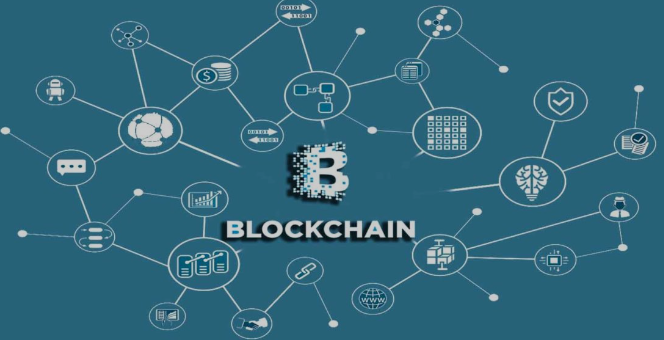Blockchain technology is transforming the way we manage and transfer information. At its core, blockchain is a chain of blocks, where each block holds a cryptographic hash of the previous block, a timestamp, and transaction data. These blocks are linked using hashing algorithms, ensuring a high level of data security and making it nearly impossible for anyone to alter the information within.
Simply put, blockchain allows secure, automated data transfer between parties without the need for intermediaries. It’s a decentralized system, which eliminates the risks and inefficiencies associated with traditional third-party involvement.
About Blockchain technology?
The term Blockchain technology literally means a “chain of blocks.” These blocks store digital information (data), and they are connected to one another through cryptographic links. While the concept has been around for a while, blockchain became widely known with the rise of Bitcoin and other cryptocurrencies in 2009. Technically, blockchain is a distributed ledger that is open to everyone. Once data is added to this ledger, it becomes extremely difficult to delete or alter.

Each block in a blockchain contains three critical elements:
- Data – This can include information such as transaction records.
- Hash – A unique identifier for each block, akin to a digital fingerprint.
- Previous Block Hash – The hash from the previous block, ensuring continuity in the chain.
Hashes ensure that each block in the blockchain is distinct. Just like no two fingerprints are the same, no two blocks in a blockchain can have the same hash. If the data in a block is altered, its hash will change, and the blockchain will reject the block as invalid unless all previous blocks are altered – a practically impossible task due to decentralization.
How Blockchain technology Ensures Data Security
Blockchain’s strength lies in its immutability and decentralized structure. When a new person joins the blockchain network, they receive a copy of all blocks and verify their accuracy. This verification process ensures that data remains unchanged and accurate over time. The more the blocks are verified, the stronger and more secure the data becomes.
For example, in Bitcoin transactions, when you send 1 Bitcoin from your wallet to someone else’s, a new block is created with the sender’s address, receiver’s address, and the amount. This block is then verified by nodes (known as Bitcoin Miners) in the network. Once verified, the transaction is permanently added to the blockchain.
Key Features of Blockchain Technology
- Decentralization – Blockchain eliminates the need for centralized authorities or intermediaries.
- Transparency – Every transaction is visible to everyone in the network.
- Immutability – Once recorded, the data in the blockchain cannot be altered.
In the case of Bitcoin, miners play a critical role by validating new blocks. As a reward, they receive transaction fees, contributing to the blockchain’s overall security and reliability.
Conclusion: understand the chain as many of the same objects or materials are connected to one another to make them a chain. In the case of blockchain, the blocks that make up this chain basically store information or data.
Blockchain technology is transforming the way we manage and transfer information. At its core, blockchain is a chain of blocks, where each block holds a cryptographic hash of the previous block, a timestamp, and transaction data. These blocks are linked using hashing algorithms, ensuring a high level of data security and making it nearly impossible for anyone to alter the information within.
Simply put, blockchain allows secure, automated data transfer between parties without the need for intermediaries. It’s a decentralized system, which eliminates the risks and inefficiencies associated with traditional third-party involvement.
About Blockchain technology?
The term Blockchain technology literally means a “chain of blocks.” These blocks store digital information (data), and they are connected to one another through cryptographic links. While the concept has been around for a while, blockchain became widely known with the rise of Bitcoin and other cryptocurrencies in 2009. Technically, blockchain is a distributed ledger that is open to everyone. Once data is added to this ledger, it becomes extremely difficult to delete or alter.

Each block in a blockchain contains three critical elements:
- Data – This can include information such as transaction records.
- Hash – A unique identifier for each block, akin to a digital fingerprint.
- Previous Block Hash – The hash from the previous block, ensuring continuity in the chain.
Hashes ensure that each block in the blockchain is distinct. Just like no two fingerprints are the same, no two blocks in a blockchain can have the same hash. If the data in a block is altered, its hash will change, and the blockchain will reject the block as invalid unless all previous blocks are altered – a practically impossible task due to decentralization.
How Blockchain technology Ensures Data Security
Blockchain’s strength lies in its immutability and decentralized structure. When a new person joins the blockchain network, they receive a copy of all blocks and verify their accuracy. This verification process ensures that data remains unchanged and accurate over time. The more the blocks are verified, the stronger and more secure the data becomes.
For example, in Bitcoin transactions, when you send 1 Bitcoin from your wallet to someone else’s, a new block is created with the sender’s address, receiver’s address, and the amount. This block is then verified by nodes (known as Bitcoin Miners) in the network. Once verified, the transaction is permanently added to the blockchain.
Key Features of Blockchain Technology
- Decentralization – Blockchain eliminates the need for centralized authorities or intermediaries.
- Transparency – Every transaction is visible to everyone in the network.
- Immutability – Once recorded, the data in the blockchain cannot be altered.
In the case of Bitcoin, miners play a critical role by validating new blocks. As a reward, they receive transaction fees, contributing to the blockchain’s overall security and reliability.
Conclusion: understand the chain as many of the same objects or materials are connected to one another to make them a chain. In the case of blockchain, the blocks that make up this chain basically store information or data.

